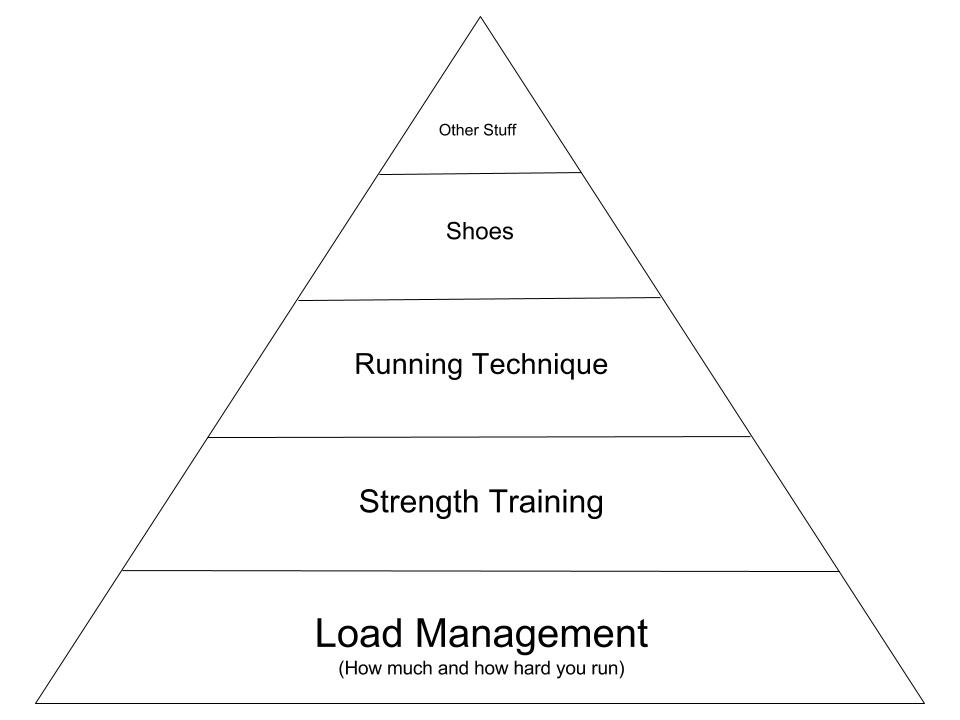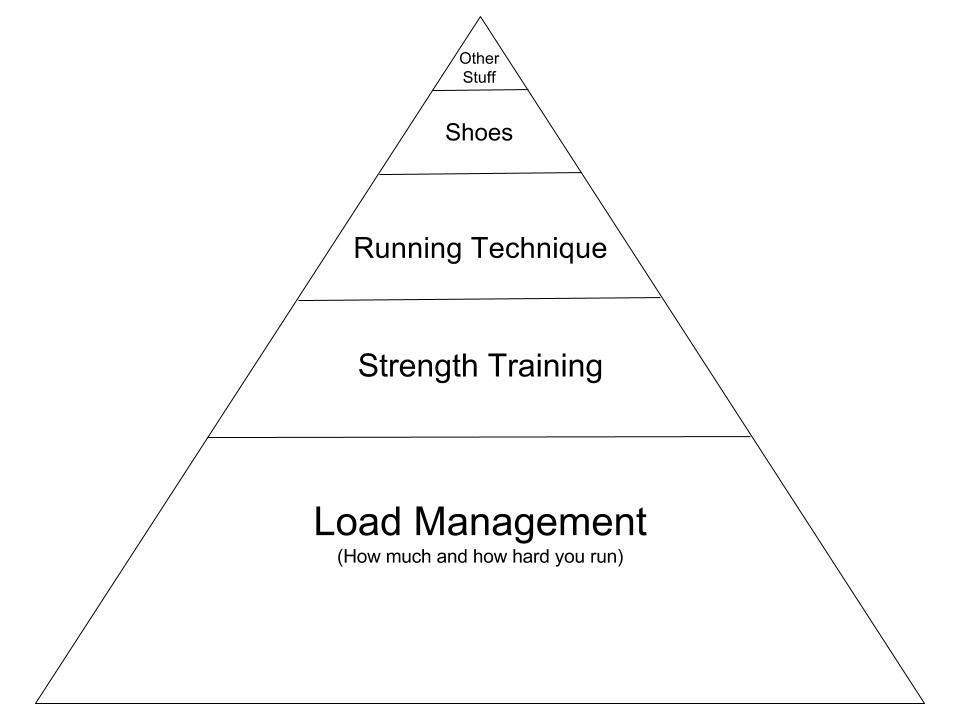Now that we’ve taken a good look at load management, as well as strength training and running technique, we’re going to look at other factors that can help cause or prevent running injuries.
Back to the scene of the crime
I’ve had my client on the treadmill and performed a detailed analysis of her running technique. It is literally perfect. There is not a single thing that I can identify that may have contributed to this injury.
Okay, I can cross running technique off the suspects list.
Now we are really scraping the bottom of the barrel.
Shoes
Where shoes fit in is even more thorny a topic than running technique. To try and sum things up as simply as possible. If you running technique is really good, then your shoes are probably not that important. Running technique is related to running injuries as I’ve discussed in my article Running Technique: Elephants, Monkeys and Mice. If your shoes are messing up your running technique then they may be increasing your risk of developing an injury. If, however, your technique is good, the shoes are probably not a problem.
So sometimes shoes matter, but we are going through from the most likely suspect to the most unlikely. Shoes are far lower down the list than people usually think. We already have load management, strength training and running technique to consider before we look at the shoes. Most injured runners I work with blame the shoes first and don’t even consider those other elements, which are far more important.
Let me share a personal anecdote to illustrate this point.
In 2015, my cousin was training for the Barcelona Marathon. His foot started to hurt so, as usual, he called his Physio cousin (me) for some advice. We chatted for awhile and he described a pain in the lateral part of his foot after running more than 10k. He was going to buy some new shoes that weekend as he was sure that was the cause. I asked him to put a pin in that while we looked at some other stuff.
We started with the prime suspect, load management. He pulled up his Nike+ app dashboard and we had a look at his monthly kilometres. This is what we saw:
December: 26k
January: 44k
February: 72k
March: 84k
April :192k
Me: “Okay, can you see that between March and April your training volume increased by over 100%?”
My cousin: “Oh, yeah.”
Me: “Still think it’s your shoes?”
My cousin: “Erm, maybe not.” (smirking)
Okay, I know. This is not a double blind randomized control trial with a huge sample. However, it is very representative of my clinical experience. Every single week I have a similar encounter with an injured runner. You can also see that my cousin had no base. He had scaled back the running around the holidays to spend more time with his family.
That is why I state that footwear is rarely the cause of running injuries. It’s not because shoes are irrelevant. It’s just that it is far more commonly something else.
A little caveat here. More research is coming out all of the time and I recommend people check out the work of Irene Davis if you are interested in learning more about footwear and it’s relationship to injuries. My position on the importance of shoes in injury prevention may change in the future depending on what the research says.
For now though, think load management > strength training > technique > shoes.
Back to the scene of the crime
My injured runner has been barefoot since birth. She has literally never worn a shoe, not even sandals. Her static foot posture is perfect and while running we see biomechanics so optimal it makes me want to weep with joy.
So, it’s not the shoes. Cross that suspect off the list.
Who’s left?
Other Stuff
Okay, in reality, I’ve never gotten this far down the list of suspects. I’ve usually found the criminal by now. An arrest has been made, bail denied and a trial date set.
So what comes in this list of most Unusual Suspects:
Stretching
Foam Rolling
Core Stability
Muscle Activation Patterns
Breathing Patterns
General Flexibility/Mobility
You can pretty much read that as a list of things that do not cause running injuries.
Again, I know this is a bit controversial. It’s just my professional opinion at the time of writing. I very well may change my opinions in the future.
That being said, how much time do runners spend focussing on the Unusual Suspects? Quite a lot in my experience. How much time do runners spend focussing on the Usual Suspects? Not enough.
That’s the main message for this article. Prioritize your injury prevention strategies and focus your efforts towards the usual suspects.
Running Injury Prevention Pyramid
Inspired by a tweet from The Sports Physio Adam Meakins I made my Usual Suspects into a Running Injury Prevention Pyramid.

Truth be told, the pyramid should probably look more like this:

Diet
I am quite sure that diet plays a big role in injury development risk. However, diet and nutrition are not my area of expertise so I have left them out of this article for the sake of simplicity.
Conclusion
If you want to reduce the chances of you developing a running injury. Focus your efforts on the Usual Suspects:
Load Management > Strength Training > Running Technique > Shoes > Other Stuff
What do you think? Do you spend a lot of time focussing on the Unusual Suspects? Do you disagree with my prioritization? Have you had injuries that have developed due to one of the Usual Suspects? Please leave your comments below…